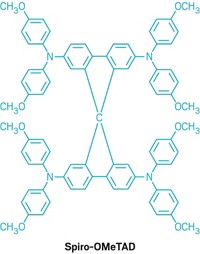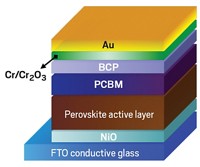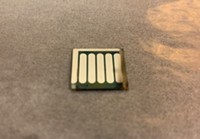Advertisement
Grab your lab coat. Let's get started
Welcome!
Welcome!
Create an account below to get 6 C&EN articles per month, receive newsletters and more - all free.
It seems this is your first time logging in online. Please enter the following information to continue.
As an ACS member you automatically get access to this site. All we need is few more details to create your reading experience.
Not you? Sign in with a different account.
Not you? Sign in with a different account.
ERROR 1
ERROR 1
ERROR 2
ERROR 2
ERROR 2
ERROR 2
ERROR 2
Password and Confirm password must match.
If you have an ACS member number, please enter it here so we can link this account to your membership. (optional)
ERROR 2
ACS values your privacy. By submitting your information, you are gaining access to C&EN and subscribing to our weekly newsletter. We use the information you provide to make your reading experience better, and we will never sell your data to third party members.
Solar Power
Fluoride treatment protects solar cells
Additive's knack for forming strong bonds impedes ion diffusion and decomposition in perovskite layer
by Mitch Jacoby
May 16, 2019
| A version of this story appeared in
Volume 97, Issue 20
Fluoride treatments aren’t just for protecting your teeth. According to a new study, an ingredient found in toothpaste can also help prevent solar-cell decay (Nat. Energy 2019, DOI: 10.1038/s41560-019-0382-6). The finding may lead to simple chemical procedures for extending the lifetime of low-cost photovoltaic (PV) devices based on a promising class of materials called perovskites.
Solar cells made with sunlight-absorbing metallo-organic perovskite materials have rocked the PV world in recent years. The reason is that methyl ammonium lead trihalides and other perovskites are much less expensive to make and process than crystalline silicon, the standard PV material, yet they offer comparable performance. The power-conversion efficiency—a measure of sunlight in and electricity out—of the best perovskite cells matches that of crystalline silicon cells, roughly 23%. But perovskite cells don’t stand the test of time; within days, the photoactive layer decomposes. This shortcoming has impeded commercialization of this promising class of solar cells.
Ion vacancies in the thin crystalline perovskite layer are common starting points of decomposition. The presence of these defects causes halide anions and organic cations in the material to diffuse to the film’s surface, from where they can desorb, evaporate, and undergo other reactions that degrade the perovskite layer. Moisture, heat, and intense light exacerbate these reactions.
To eliminate ion vacancies and combat this breakdown process, Nengxu Li and Huanping Zhou of Peking University, Shuxia Tao of Eindhoven University of Technology, and coworkers treated their perovskites with various alkali halides. They compared dozens of treated and untreated cells, operating them at elevated temperatures and under intense light to speed the aging process. Treatment with sodium fluoride, a common toothpaste ingredient, worked best. Fluoride-treated cells that had initial power-conversion efficiencies near 21.5% maintained their performance for more than 1,000 hours, while the efficiencies of untreated cells fell to half their initial values.
Based on spectroscopy, microscopy, and computations, the researchers attribute the treated cells’ durability to fluorine’s high electronegativity, which gives the ion a knack for forming uniquely strong hydrogen and ionic bonds. They explain that fluoride ions form strong hydrogen bonds with the material’s organic cations and strong ionic bonds with its lead halide, pinning those species in place and impeding decomposition.
The team’s single fluoride treatment passivated both anion and cation vacancies in perovskites at the same time, which is impressive, says Brown University’s Yuanyuan (Alvin) Zhou, a specialist in perovskite solar-cells. Earlier studies addressed just one type of defect, he says. In addition, he says the group has proposed “a very plausible mechanism” for why this works so well. It would be very interesting to use high-resolution microscopy to see exactly what is happening in these fluoride-passivated perovskites, he adds.





Join the conversation
Contact the reporter
Submit a Letter to the Editor for publication
Engage with us on Twitter